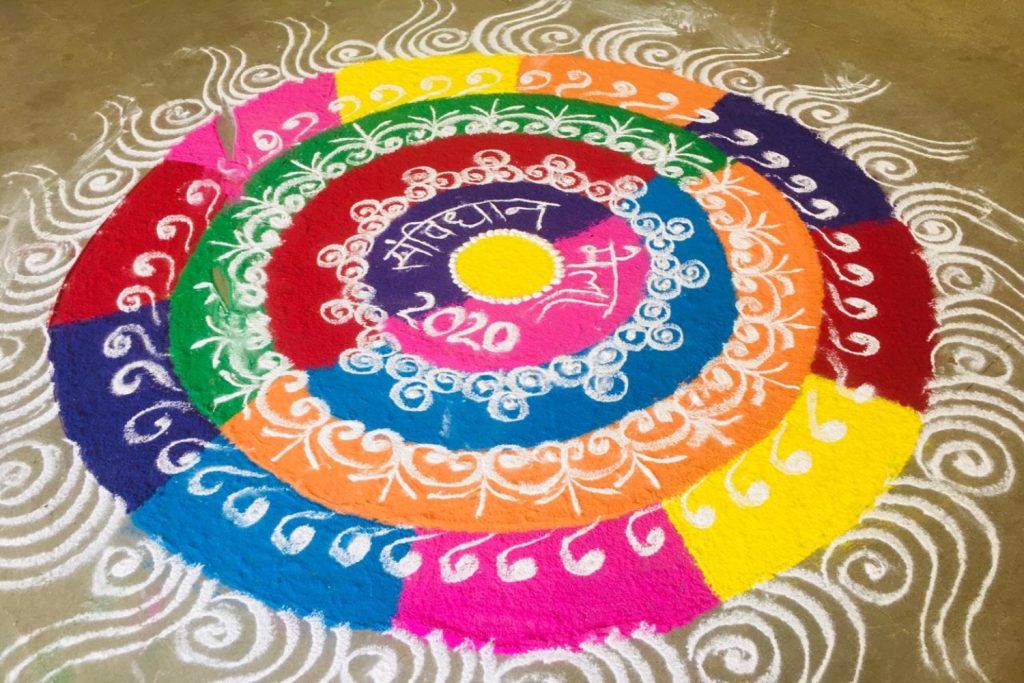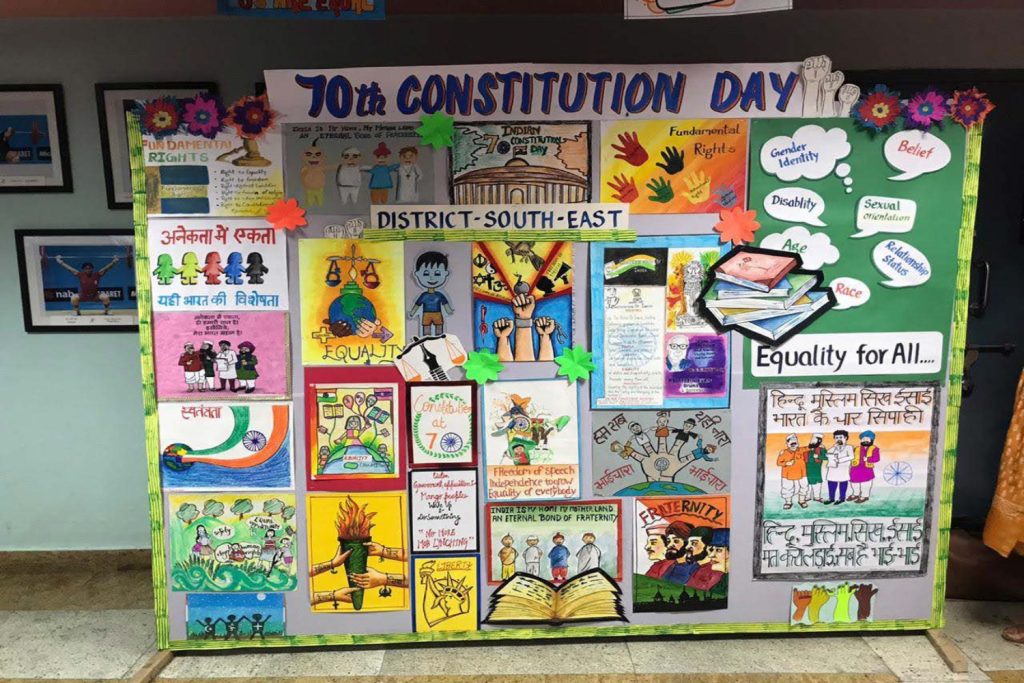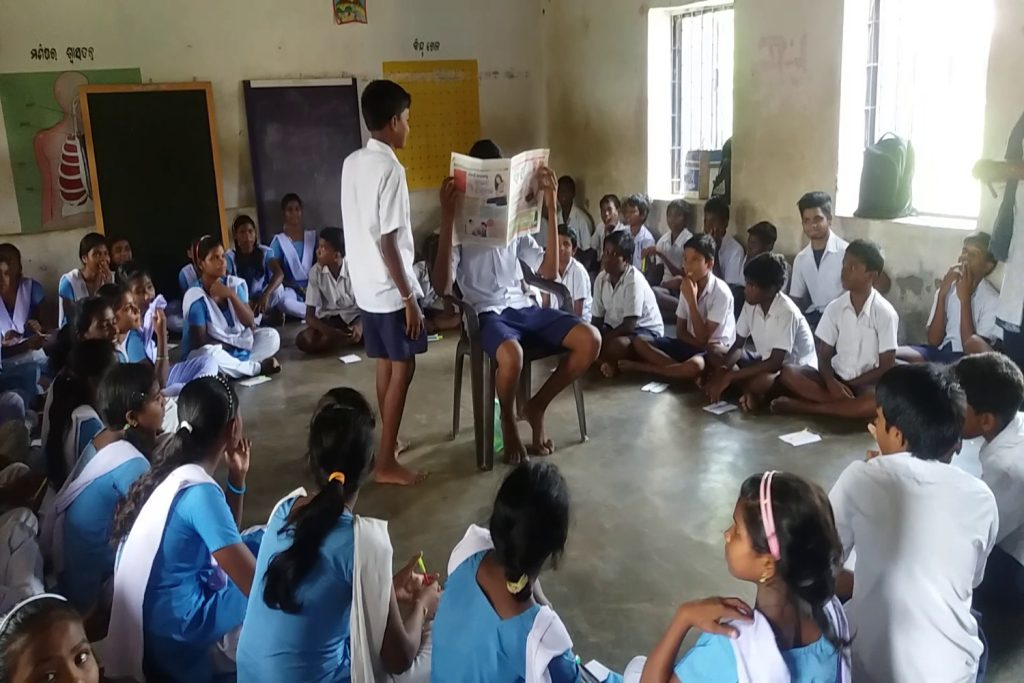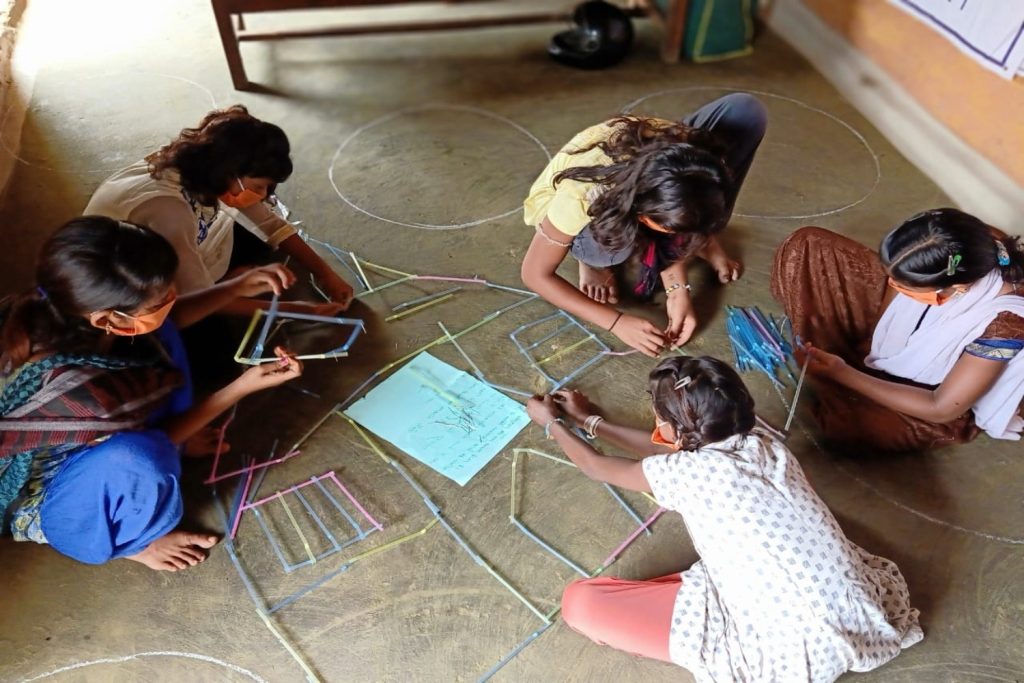Social Sciences Teaching and Learning
The ‘Ground Zero’ piece tries to learn from organizations across the country that are innovating in the field of social sciences curriculum and pedagogy, and in the process, are building linkages between these subjects, the larger community, and their own organization practices.

How are education non-profits working with social sciences teaching and learning to make classroom transactions fun and socially relevant?
Social sciences teaching-learning has rarely been a focus of governmental attention in India. In the wider society, these subjects are seen as being ‘softer’ disciplines and are perceived as having not much relevance in an increasingly competitive job market. Manifestations of these processes range from neglect of teachers’ training in these subjects, the inability of the curricula to keep pace with advances in the disciplines, pedagogic conservatism that converts the learning of these subjects to a mere parroting of facts, and inadequate investments in Teaching Learning Material (TLM) creation in these subjects that are contextually relevant but at the same time conceptually sophisticated.
But many non-governmental organizations working in education have started intervening in this area, and are making it a focus of their attention. We spoke to non-profits such as Eklavya (Madhya Pradesh – MP), Patang (Odisha), Synergy Sansthan (MP), and We the People (Delhi) to understand their work related to teaching and learning of social science subjects. They have been trying to make these processes learner-friendly. Some of them have been trying to use the understanding gained by this work as a trigger for positive social action as well.
Learnings from a Two-Decade Long Experiment
Eklavya formally began working in the field of social science education in 1983. This was an experiment that was started in eight schools in Madhya Pradesh and continued for nearly two decades. This has perhaps been one of the most sustained engagements in social science education at the school level in India, or for that matter, anywhere else in the world.
Eklavya’s Social Science Program never bought into the magical faith in the transformative power of the ‘best textbook’ as many educational initiatives in India are sometimes wont to do.
From the very beginning, the work of Eklavya in social science education has been characterized by many features that have made this an experiment worth emulating. One of the most important aspects of the organization’s Social Science Program has been that it adopted a multi-pronged approach. As a part of this strategy, Eklavya tried to address both curricular concerns and the development of child-centric educational approaches related to learning processes of social sciences subjects.

The subsequent curricular innovations and educational experiments kept the experiences of students and teachers at the center of classroom transactions. The organization also innovated with assessment patterns that did justice to the experiments in curriculum and pedagogy, and whetted the children’s curiosity. It also took the teachers along through a process of training and colearning, and created a set of textbooks that even now remain models of such writing.
Eklavya also facilitated a productive interface of the experiences of university teachers of social sciences disciplines, school teachers, and education activists in developing context-specific curriculum and pedagogy in social science subjects. The education activists working in the social science group in Eklavya came from a large number of related disciplines. This got translated into practice in many different ways. The first was related to textbooks.
“What it means to be a citizen should be very clear and rooted in students. They must have the understanding that citizenship is something that we all need to play a vital role in.” – Sana
According to Arvind from Eklavya, “Faithfulness to disciplinary learning and practice, and age-appropriate choice of thematic topics have been the two poles around which debates surrounding TLM and textbook creation have traditionally mapped out. The Eklavya team trod the middle ground here, although leaning slightly towards a more disciplinary orientation; but this varied from subject to subject.”
In the history textbooks that Eklavya’s Social Science Program created, for example, the focus shifted from political history involving the chronology of dynasties and the exploits of kings to social history that tells us more about how common people lived in the past – for example, about what clothes they wore and what food they ate.
By unburdening the curriculum through the removal of some topics and details of political history, and the inclusion of those aspects of social history that have had immediate relevance to the children’s lives, these textbooks were able to make history come alive for them. As a matter of curricular principle, in History, the chronological approach was followed with the focus remaining on the dynamics between continuity and change.
Commenting on the TLM preparation process, Arvind says, “These books were as different from conventional textbooks in India as possible, as we ‘trialed’ these in the field. Which is to say that after the first version was produced, these were then transacted in the classrooms. Feedback from students and teachers was taken, and experts were invited to observe classroom processes. Through robust experimentation, these textbooks were finalized with the teachers’ voices finding important spaces in the final versions.”
Following this process also meant, that the production of these textbooks was seen as part of a larger process of intervention spanning curricular innovation, pedagogic change, assessment reform, and teacher training. Eklavya’s Social Science Program never bought into the magical faith in the transformative power of the ‘best textbook’ as many educational initiatives in India are sometimes wont to do.
This was possible because of Eklavya’s larger social vision, where the effectiveness of improved socials sciences teaching and learning had to translate into a broader process of conscientization and positive social change. Even in this, Eklavya tried to tread the middle ground between making the learning of the social sciences fun and developing the ability to use such knowledge for constructive social action.

Bridging Civics Education and Civic Action
An important contemporary initiative in this regard is the set of Civic Action Projects that the NCR-based organization We the People (WTP) implements with school children in the context of civics education. As a part of this initiative, WTP collaboratively works with schools, civics teachers, and students to pick up projects from their curriculum, especially from the social science subjects. Sometimes students end up doing some action project that is already a part of their coursework.
These projects try to inculcate this idea in students, that if they see an issue around them, such as non-functional streetlights, they should take up the responsibility and try and address it. Possible ways in which children have approached such issues is by doing some research around their solution, contacting relevant department officials, and writing applications and articles for newspapers etc. The organization handholds this process while the students take the lead.
Through this experience, students develop a sense of how the governance system works, clarify concepts that they have learned in their social science curriculum, especially in civics, and start becoming active citizens. WTP helps students make the connections between their experiences in these projects with fundamental rights and values as enshrined in the Constitution of India. Teachers play an important role in this process.
Through this initiative WTP makes an important contribution to social science teaching-learning by productively working across the domains of civics education and citizenship education. The organization attempts to not only provide students with opportunities and experiences of civic activism, but also to deepen their learning of the subject of civics and make it more meaningful. By making experiential learning a part of civics education, WTP is trying to make it more interesting and engaging.
According to Sana from the organization, “We never feel that this subject is of use in our real life. But it is one of the most important subjects, because everyone is ultimately going to be a citizen. What it means to be a citizen should be very clear and rooted in students. They must have the understanding that citizenship is something that we all need to play a vital role in. So, we try to bridge that gap and build connections between the Constitution of India with citizens of the country – between ‘We the people’ and the government. So, that’s how we look at it.”
WTP plays this crucial role of bridging between civics education and citizenship education by collaboratively figuring out possible areas of intervention with schools, teachers, and students. Working with teachers, and using the existing curricula in schools, have been integral aspects of such a process. The Delhi Government’s Mentor Teacher Program is a case in point. WTP has used the radical potential of this program by working intensively with mentor teachers to extend and deepen the reach of the organization’s initiative in civics education.
Sana says, “We had topic-wise, regular training of these teachers, and we took their feedback. It’s the point where we face the challenges, and then we work on those challenges, taking it further. So, initially, we were regularly engaging with these mentor teachers for social sciences in Delhi. But then, over time, it lessened because of many factors. One important reason was that a large number of them were now trained. Through the social science mentor teachers and with the education department, we also ran a campaign called ‘Constitution@70’ when we completed 70 years of the Constitution. That was a oneyear-long campaign where we touched upon all the constitutional values. Once this Constitution@70 campaign got over, considering its success and impact on students, it was converted into a detailed curriculum. It is yet to be launched by the Government of Delhi. This proposed curriculum will involve students and all teachers, including those teaching social science subjects.”

Through its initiatives in civics education and work on inculcating constitutional values, WTP is trying to bring together classroom learning and civic action in an organic and integral way. Another frame within which organizations are working at building bridges between the two is by making certain social science conceptualizations and frameworks central to both their programmatic interventions in classrooms and their vision of social transformation.
Social Change through Social Learning
A good example of this is the way in which Patang, an organization that works in Odisha on issues surrounding the youth, volunteering for positive social change and education has approached the concerns surrounding gender. Patang sees gender as an important lens through which to locate social processes and hierarchies. It also considers gendersensitive social interventions as important methods through which one can transform inequitable social relations and walk towards the goal of an egalitarian society. The organization does this through both its own organizational practices as well as in the pedagogic interventions in classrooms.
Patang started seriously thinking about gender through its work with the youth. Lack of gender sensitivity and knowledge of sexual and reproductive health (SRH) were seen as important gaps in the thinking of youth leaders. The organization started developing modules around these issues and transacted them with youth groups; soon, tangible positive results were visible.
Young adults, especially boys, started taking the initiative in changing conditions in their families and communities that hampered the freedom and mobility of girls and women. These were often related to continuing education, the age of marriage, and questions surrounding SRH.
When Patang started working in schools, it naturally carried these concerns and strategies to the primary and upper primary classrooms. According to Rupesh and Bhumisuta from the organization, “After obtaining permission from the authorities, we conduct a forty hours long module on ‘Gender and Life Skills’ after an initial round of conversations and context setting with the schools. Through an interactive process between facilitators and students in which teachers also participate, children learn about the socially constructed nature of gender identities, SRH and ways of addressing gender-related inequities in our homes and communities.”
Eklavya also facilitated a productive interface of the experiences of university teachers of social sciences disciplines, school teachers, and education activists in developing context-specific curriculum and pedagogy in social science subjects.
According to Bhumisuta, “an important step for Patang in this journey has been a process assessing existing textbooks in schools from classes I to VIII being transacted in the governmental schools in the state. We found that the textbooks were written from the perspective of men, and often represented gender relations in a non-egalitarian manner. For example, these often put across caregiving work as the exclusive preserve of women. They were also written mostly by ‘upper-caste’ men, with women writers occasionally finding a token representation.”
So when Patang went on to create TLM on various subjects, from the very beginning, they were alert to the gendered dimensions of such a process. They took care to ensure the participation of women in the creation of such material, made all their pedagogic material (even when not overtly related to women’s issues) gender-sensitive, formulated their classroom transactions in such a way that ensured the effective participation of girls, and allowed for healthy interactions across genders to challenge gendered stereotypes.

…tribal societies are far more democratic compared to caste-ridden rural communities. Children from the tribal communities have already internalized egalitarian values to a large extent.
In schools where Patang intervenes, students undertake action projects related to themes on gender. In one of the schools where Patang intervened, children questioned the logic of having separate water sources for girls and boys and initiated a process that terminated this practice. Students in these schools also co-create cultural programs in the form of plays, skits, songs, etc., on gender that they present to the school and then in front of the larger community. This takes the form of a day-long mela in the village, which then provides a site for community-wide learning.
Synergising Civics Education the Synergy Way
Synergy Sansthan, which works with children and youth in Madhya Pradesh, organizes similar sets of events at the village level that it calls the ‘Samvidhan Melas’ – literally ‘Constitution Fairs/Festivals.’ In these oneday festivals, children from the schools in which the organization works present to the whole village their learnings on the constitution over the preceding year. They do this by putting up exhibitions, staging plays, and singing songs – all on themes related to their learnings of the constitution, its values, and the ways in which it interfaces with our systems of governance. This work is a natural outcome of the work that the organization does with Samvidhan Clubs that it runs in schools with students as active members. These clubs serve as a training ground for children in constitutional values, and democratic norms and functioning. Through these clubs, Synergy Sansthan tries to evolve processes where children can meaningfully become a part of co-creating schools as democratic spaces.
This work of the organization in engaging with high school students (those studying in standards 6th to 10th) is a natural progression of its work with the youth of the region. Synergy has been working with the latter in conscientizing them through a process of co-learning of the democratic values enshrined in the Constitution of India. When Synergy initiated this work in the schools, it faced some important challenges.
As Vishnu from Synergy says, “Working with school children is more challenging because we are working with them in a formal institutional set up with a pre-set curriculum. With the youth, the work is happening in the community, where many issues such as caste discrimination are relatively easier to raise. The youth also already have a certain amount of experience of the political and governance system. So when we work with them, we try and build upon that experience. Whereas with children, one has to begin with the basics – the self, the family, and the immediate community context –in civics classes to make further discussions surrounding the constitution, its values, and the political/ administrative systems possible. Some teachers are supportive of our work, and are interested in co-learning new teaching methods with us. But many of them come from older traditions of pedagogy where making learning fun is seen as potentially giving rise to disciplinary issues. It is also part of a larger systemic issue because many teachers in social sciences were trained years earlier. Unlike other subjects, training in the social science subjects has not taken place for the last many years.”
Despite these challenges, Synergy has been able to make many strides towards ensuring effective civics education in the areas in which it works. The first step was to review the existing textbooks and curriculum. The existing textbooks are often unwieldy and unusable because they are written in the dominant dialect of Hindi, which most children do not have much familiarity with.
Further, the language used for writing the textbooks is a formal, academic one. These books are comprised of summaries of materials from M.A. level textbooks. Even some of the facilitators find the language dense and difficult to make sense of.
“We found that the textbooks were written from the perspective of men, and often represented gender relations in a nonegalitarian manner. For example, these often put across caregiving work as the exclusive preserve of women.”- Bhumisuta
Therefore, the team decided to create new TLM, within the existing curricular framework, by using material covered in the textbooks. The organization then prepared lesson plans for relevant themes and concepts, and created modules to be transacted in the classrooms. Each of the modules prepared by Synergy has undergone four to five iterations. After each draft was ready, it was trialed in the classroom with students, teachers and facilitators; the responses of each of these groups were incorporated in the subsequent draft.
The modules are designed to allow for activity-based learning, while covering the existing syllabus for the subject of civics. The sessions incorporate local games, role plays, projects, and activities, and start with the experiences of the children and their immediate social context to begin wider deliberations on social issues, governance systems, and our constitution and its values. Through this process of constant iteration, while working with civics education in schools, Synergy has also learned many things about its own social context.
While working in schools in rural areas, the organization realized that children from such contexts came from families and communities where hierarchies were pervasive. Therefore, a lot more intensive work related to democratic values had to be undertaken with them. Whereas in the case of schools in tribal areas, more work was needed in making the language of the TLM accessible.
Children from Scheduled Tribe communities had their own mother tongues that were very different from the language of the modules and that of the textbooks. But regarding values, the work that was needed with them was much lesser, as tribal societies are far more democratic compared to caste-ridden rural communities.
Children from the tribal communities have already internalized egalitarian values to a large extent. Therefore, working with them has reaffirmed the organization’s orientation towards constitutional values and the need for building interfaces between students’ lived experiences and social contexts, and learning process in classrooms.
In Conclusion
Organizations across India are working on social sciences teaching-learning in schools in ways that are building upon past experiences in the field and are responsive towards challenges of the present. Because of contextual factors, the focus increasingly seems to be on civics, citizenship, and constitutional values. Many organizations are using such pedagogic interventions to build deeper linkages between the classroom and the community. They are using these as learning opportunities to deepen their own understanding of the contexts in which they work, and make their own internal organizational processes better attuned to constitutional values.
Developing effective curricular and pedagogic strategies in social science teaching-learning that are context-specific and help children build larger conceptual worlds is a challenging process. The organizations we talked to are doing deep and meaningful work in this regard, although disciplines such as geography and history need much more focused and sustained initiatives. Wider social apathy for such knowledge and the slow response from the public education system remain important challenges that need to be overcome.



No approved comments yet. Be the first to comment!